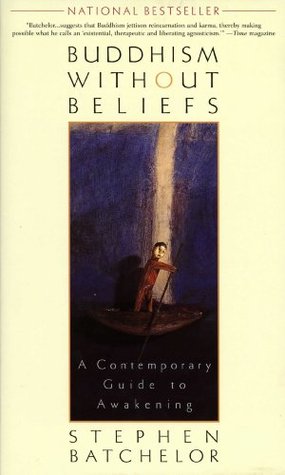More on this book
Community
Kindle Notes & Highlights
Read between
September 19 - September 23, 2019
Instead of presenting himself as a savior, the Buddha saw himself as a healer.
WHILE “BUDDHISM” SUGGESTS another belief system, “dharma practice” suggests a course of action. The four ennobling truths are not propositions to believe; they are challenges to act.
To understand a worry is to know it calmly and clearly for what it is: transient, contingent, and devoid of intrinsic identity.
The challenge of the first truth is to act before habitual reactions incapacitate us.
Letting go of a craving is not rejecting it but allowing it to be itself: a contingent state of mind that once arisen will pass away.
As with understanding anguish, the challenge in letting go of craving is to act before habitual reactions incapacitate us.
The dharma is not a belief by which you will be miraculously saved. It is a method to be investigated and tried out.
An agnostic Buddhist eschews atheism as much as theism, and is as reluctant to regard the universe as devoid of meaning as endowed with meaning. For to deny either God or meaning is simply the antithesis of affirming them. Yet such an agnostic stance is not based on disinterest. It is founded on a passionate recognition that I do not know. It confronts the enormity of having been born instead of reaching for the consolation of a belief.
Normally we are unaware of the extent to which we are distracted, for the simple reason that distraction is a state of unawareness.
Without stamping it out or denying it, craving may be renounced the way a child renounces sandcastles: not by repressing the desire to make them but by turning aside from an endeavor that no longer holds any interest.
Ironically, we may discover that death meditation is not a morbid exercise at all. Only when we lose the use of something taken for granted (whether the telephone or an eye) are we jolted into a recognition of its value. When the phone is fixed, the bandage removed from the eye, we briefly rejoice in their restoration but swiftly forget them again. In taking them for granted, we cease to be conscious of them. In taking life for granted, we likewise fail to notice it. (To the extent that we get bored and long for something exciting to happen.) By meditating on death, we paradoxically become
...more
In yearning for anguish to be assuaged in such ways, we reinforce what creates anguish in the first place: the craving for life to be other than it is. We find ourselves spinning in a vicious circle.
Dharma practice is founded on resolve. This is not an emotional conversion, a devastating realization of the error of our ways, a desperate urge to be good, but an ongoing, heartfelt reflection on priorities, values, and purpose. We need to keep taking stock of our life in an unsentimental, uncompromising way.
To meditate is not to empty the mind and gape at things in a trancelike stupor. Nothing significant will ever be revealed by just staring blankly at an object long and hard enough. To meditate is to probe with intense sensitivity each glimmer of color, each cadence of sound, each touch of another’s hand, each fumbling word that tries to utter what cannnot be said.
LIFE BECOMES A succession of minibirths and minideaths. When I achieve what I want, I feel reborn. But no sooner have I settled into this feeling than the old anxieties resurface.
A compassionate heart still feels anger, greed, jealousy, and other such emotions. But it accepts them for what they are with equanimity, and cultivates the strength of mind to let them arise and pass without identifying with or acting upon them.


